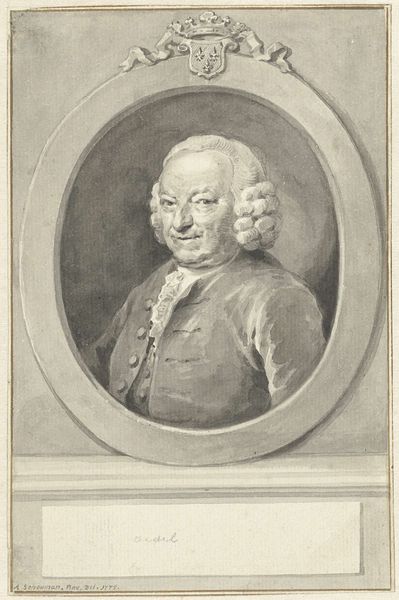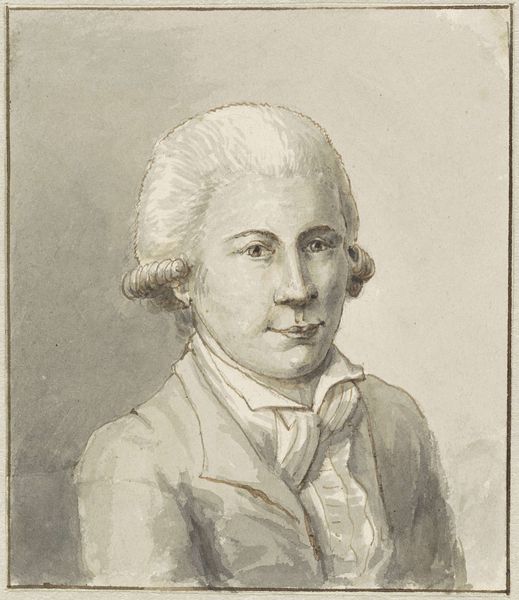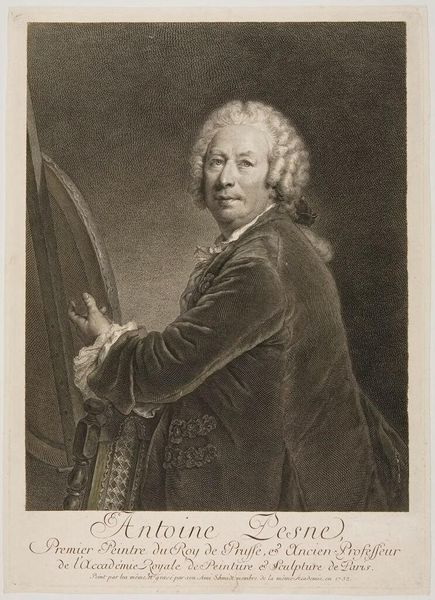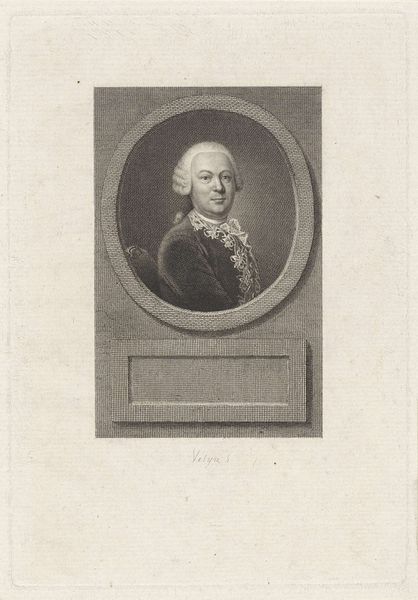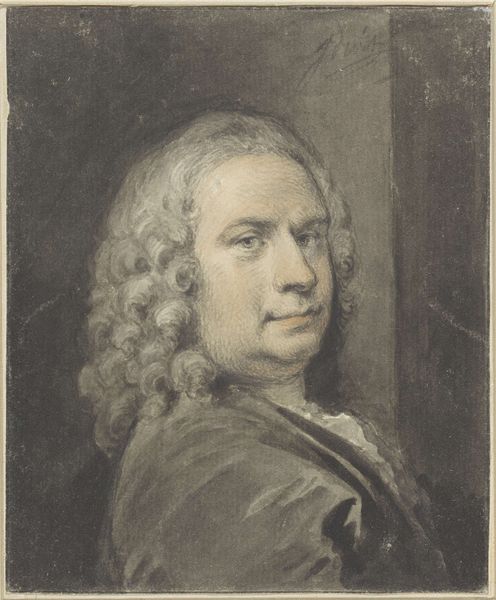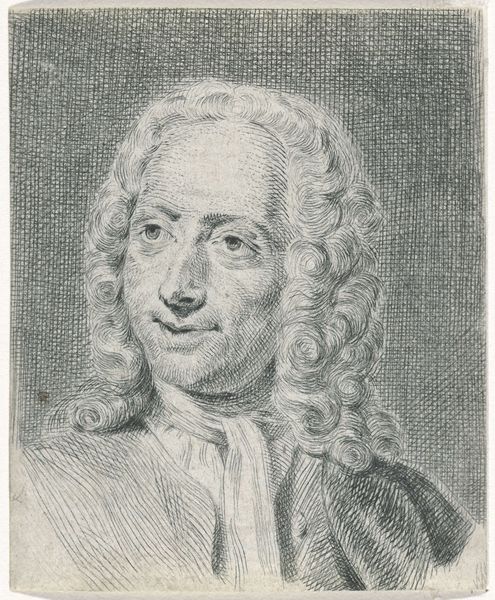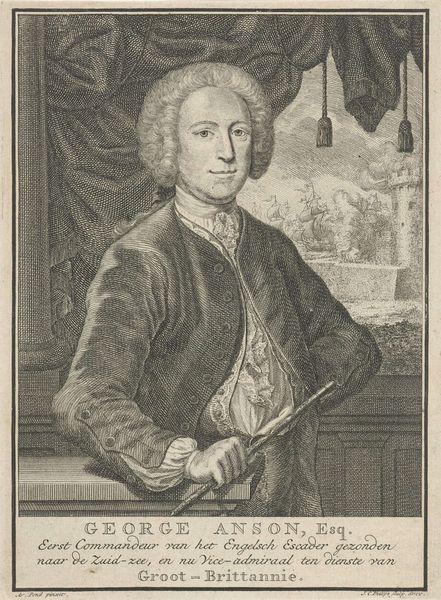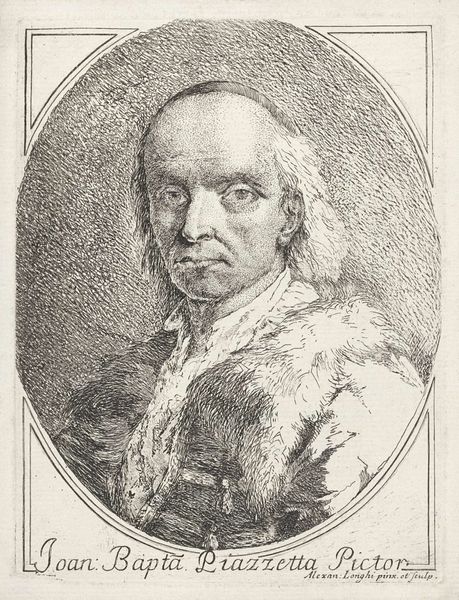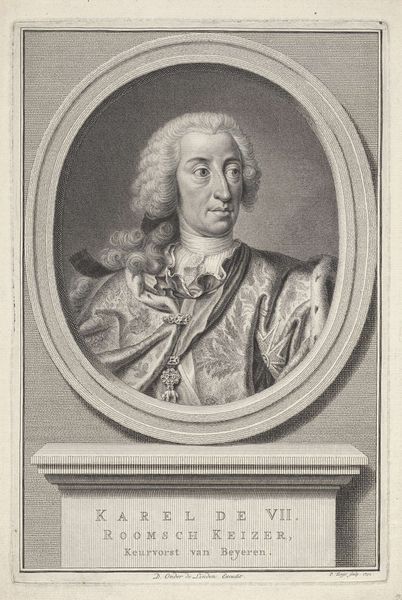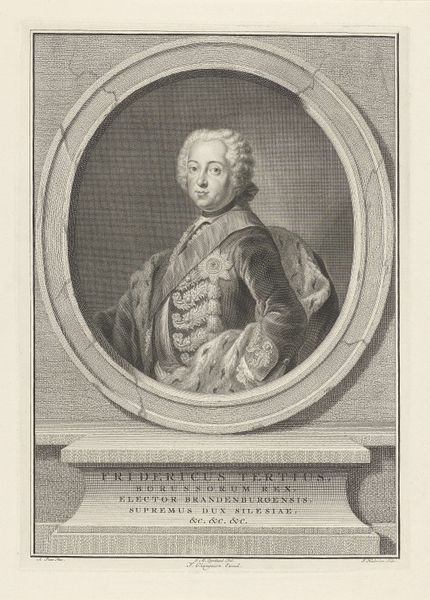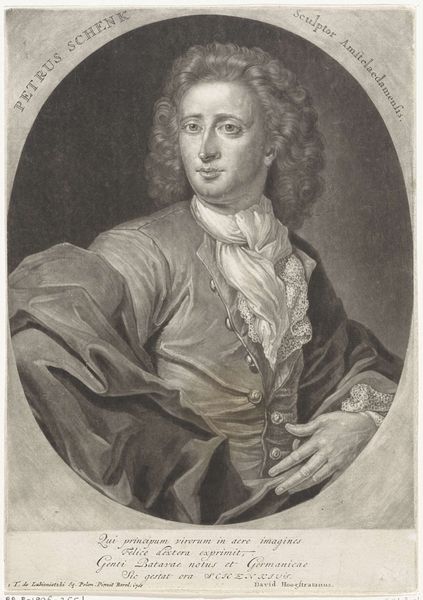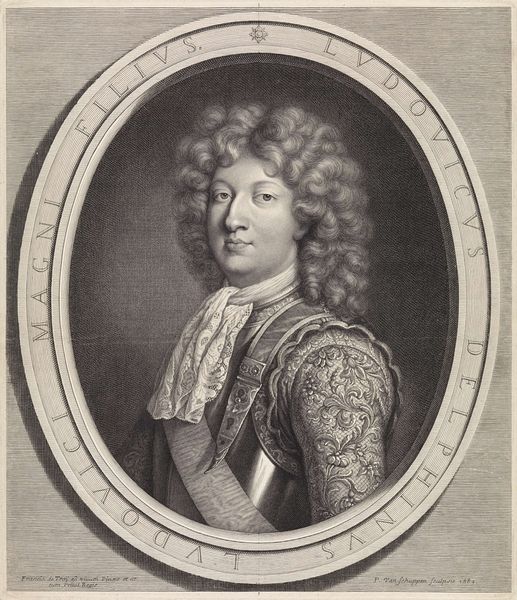
Portret van een heer met pruik en gegalonneerde jas, driekwart naar rechts 1787
0:00
0:00
drawing, pencil
#
portrait
#
pencil drawn
#
drawing
#
neoclassicism
#
charcoal drawing
#
pencil drawing
#
pencil
#
portrait drawing
#
academic-art
Dimensions: height 370 mm, width 280 mm
Copyright: Rijks Museum: Open Domain
Editor: So, this is Johannes Heinsius' "Portrait of a Gentleman with a Wig and Braided Coat, Three-Quarter View to the Right," made in 1787, crafted with pencil. It strikes me as remarkably detailed for a drawing, especially the textures in the wig and lace. How do you read this piece? Curator: Immediately, I see a concentration on the materiality of status. The meticulously rendered wig and the braided coat aren’t simply decorative; they represent the means of production, the skilled labor needed to create such exquisite items. Consider the social context: this wasn’t just clothing; it was a visible signifier of power, produced through specific economic and social relations. What kind of labor do you think went into the braiding, the lace making? Editor: I imagine a lot! Those details must have been incredibly time-consuming to produce by hand. Do you think the artist is commenting on the elite, then, through this attention to detail? Curator: Absolutely, and even more subtly, perhaps commenting on the cost of that status. It also makes me wonder about the quality of the pencil itself. What materials were accessible for the artist in 1787 and how did the quality of materials available influence this work? And think about consumption: this portrait itself is an object of consumption, showcasing status and perpetuating a cycle. Where would it hang? Who would see it? Editor: So, beyond just admiring the artistic skill, we can really delve into the economic and social systems at play in 18th-century portraiture. It is much more layered than I first realized! Curator: Precisely! Looking at the artwork through the lens of materials, production, and consumption can unlock a whole new understanding of its meaning and its role in society. Editor: I hadn't thought about it that way. Thank you!
Comments
No comments
Be the first to comment and join the conversation on the ultimate creative platform.
